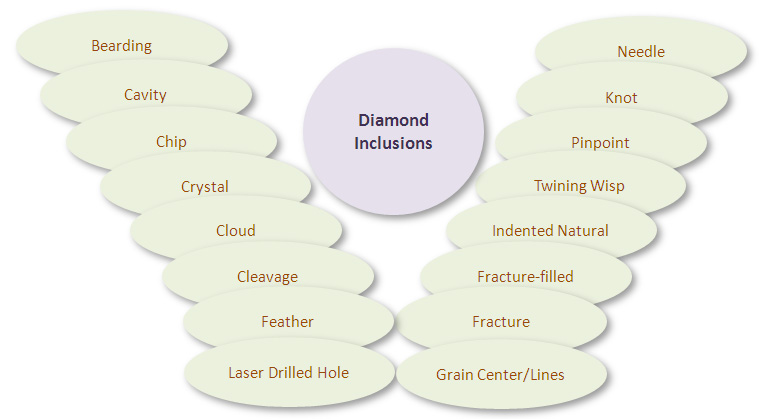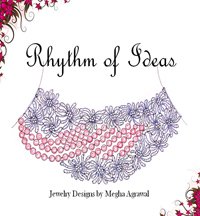Diamond Inclusions
Diamond inclusions are the internal flaws that are found within its crystalline
surface. These flaws are created due to irregular
crystallization of diamond during its formation process. Small crystals are trapped inside when diamond is forming, and sometimes these crystal growth can lead to irregularities in atomic structure of diamond.
Natural diamonds are not created in laboratory under controlled environment. Formation of a natural diamond takes millions of years under intense pressure and heat, approximately 100 miles beneath the earth’s surface.
So, it’s natural for most diamonds to have Flaws. This being a natural phenomenon, pattern of flaws in one diamond can never be same as of another diamond. This is something that gives diamond its unique identity, and it's is very similar to unique finger-print patterns in humans.
Therefore, it will not be wrong to say - inclusions are diamond’s fingerprints. Diamond inclusions also help in differentiating between natural diamond and synthetic diamond, because one of the flaws of synthetic diamond is that it’s too perfect and does not have any flaws.
Diamond inclusions are present in all natural varieties and has quite an effect on diamond clarity. Degree of influence on clarity depends on number, location, size and color of inclusions. Very few diamond inclusions are visible to naked eyes but can be viewed from 10X magnifying lens.
Effect of Diamond Inclusions
- Brilliance – Diamond inclusions affect the stone's ability to scatter and transmit light as these flaws block the light passing through diamond. Thus, it reduces the brilliance of the stone.
- Durability – Diamond inclusions decrease its resistance to fracture.
- Beauty – Large diamond inclusions or inclusions with color, reduce the beauty.
- Price – As the inclusions in diamond increases, its price decreases.
Types of Diamond Inclusions
Following are the examples of diamond inclusions or internal flaws in different categories:
|
Bearding 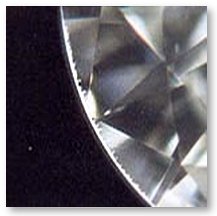
|
Cavity 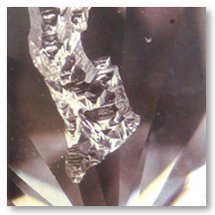
| |
|
Chip 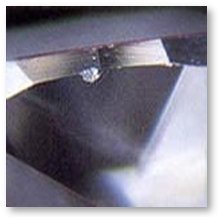
|
Crystal 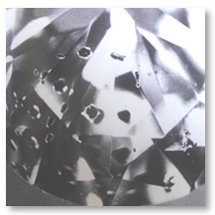
| |
|
Cloud 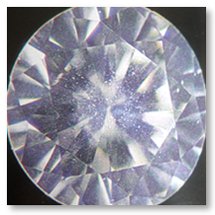
|
Cleavage 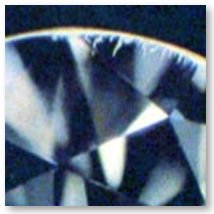
| |
|
Feather 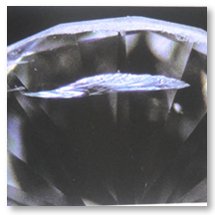
|
Fracture 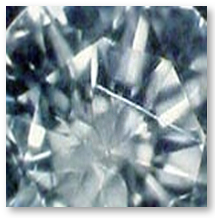
| |
|
Twining Wisp 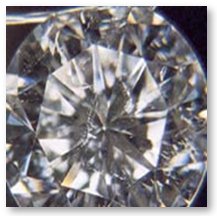
|
Pinpoint 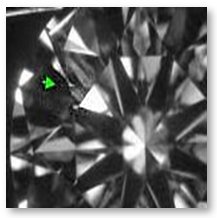
| |
|
Needle 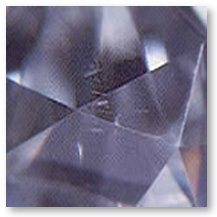
|
Knot 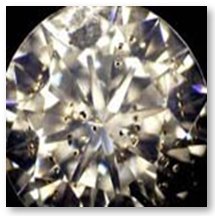
| |
|
Grain center/lines 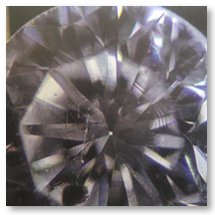
|
Indented Natural 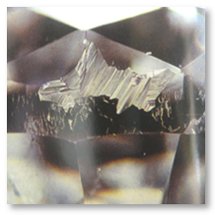
|
|
Laser-Drilled Hole 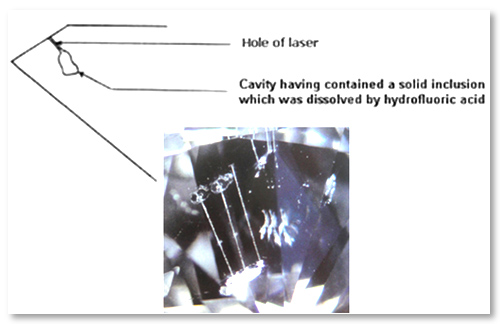
| ||
|
Fracture Filled 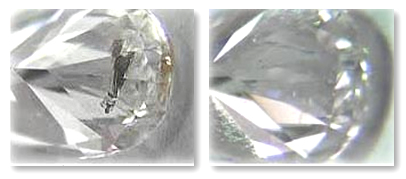 Before Fracture Filling (left) and After Fracture Filling (right)
|
Return from Diamond Inclusions to Clarity of Diamond
Return from Diamond Inclusions to Diamond Jewelry Homepage
I hope you'll not mind sharing this on Twitter, Facebook and with everyone else :)
Feel free to share if something is in your mind and want it to be covered on this site.
My Newsletter
Did you liked this article? Sign-up my FREE weekly newsletter and I'll send you more awesome new additions on this website along with latest jewelry happenings around the world, and download my Jewelry Design Album for FREE!
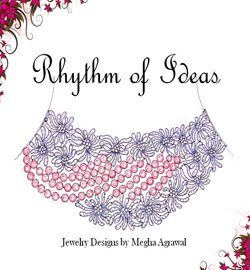 |
|
